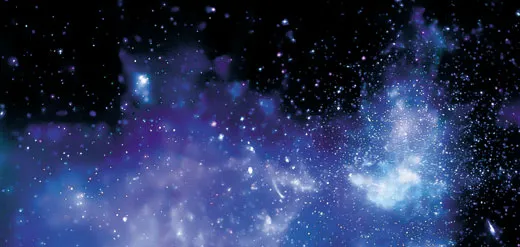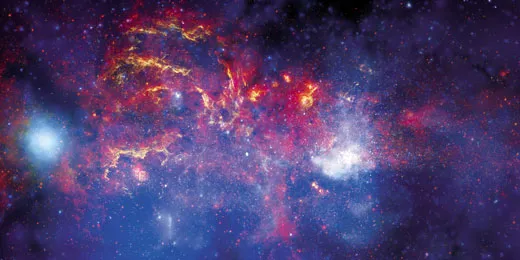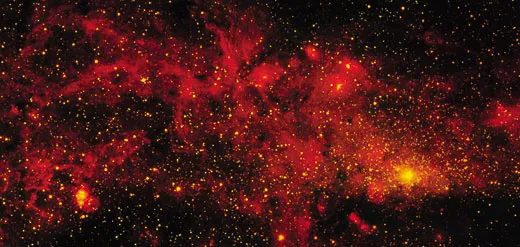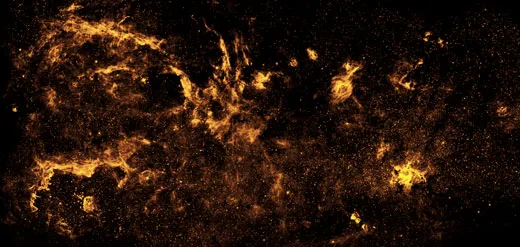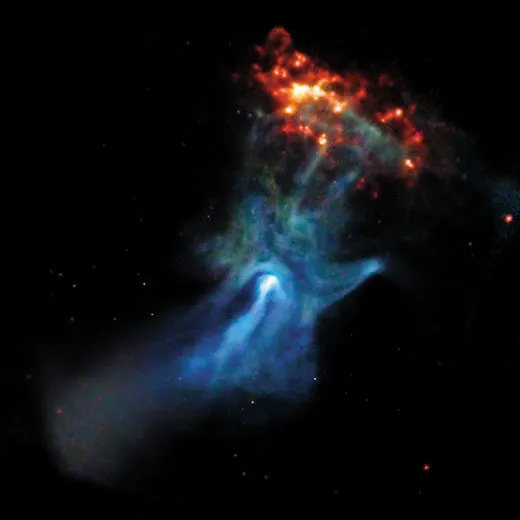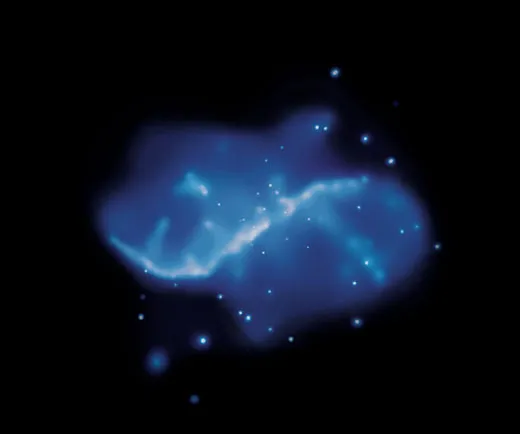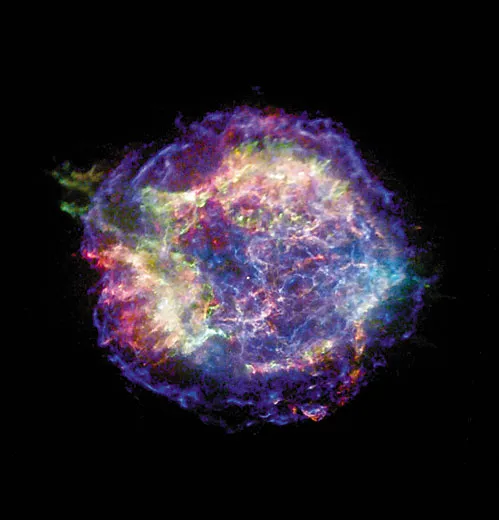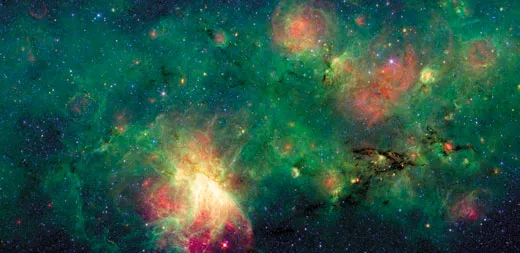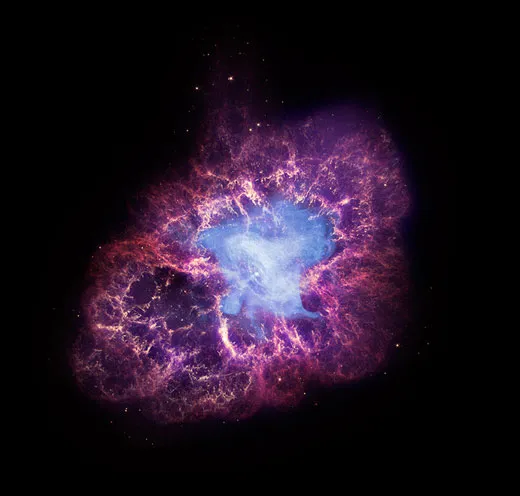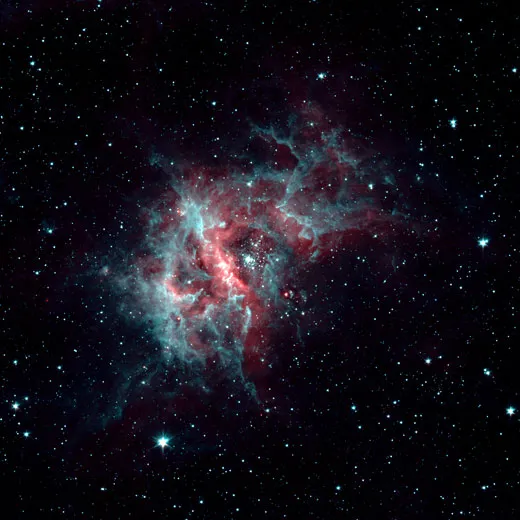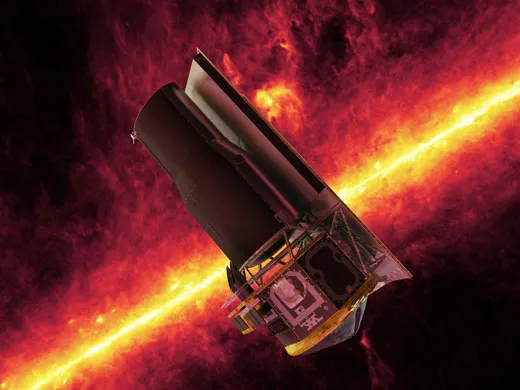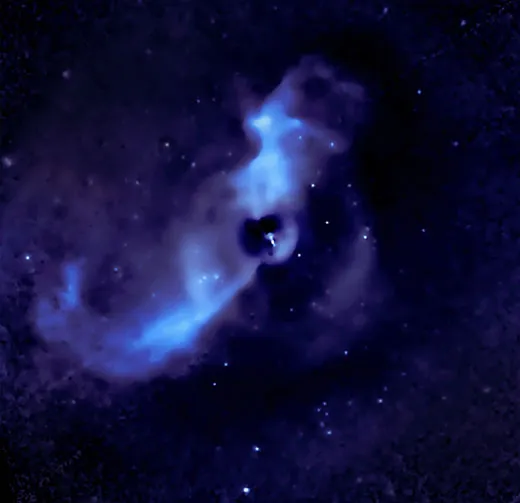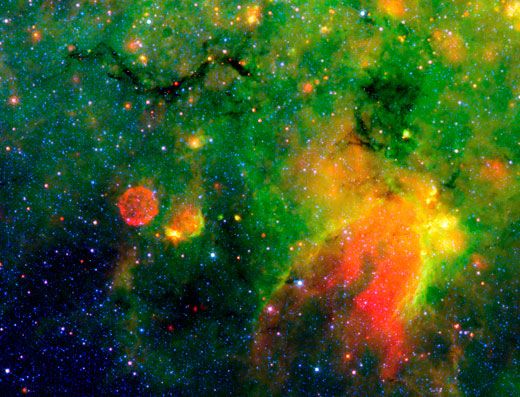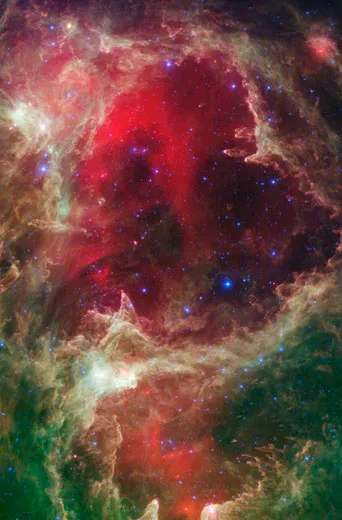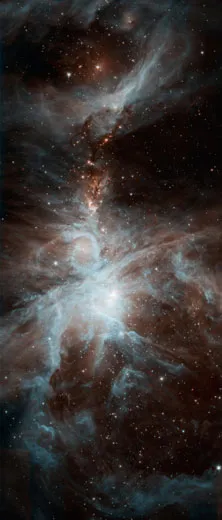Brilliant Space Photos From Chandra and Spitzer
Two unsung space telescopes create eye-opening images of the universe from light we can’t see
/https://tf-cmsv2-smithsonianmag-media.s3.amazonaws.com/filer/Telescope-Milky-Way-center-631.jpg)
To human eyes, the night sky is a confetti of stars. Powerful telescopes show us the remote planets and faraway galaxies that our puny retinas cannot see. But even the Hubble Space Telescope can’t reveal everything that’s out there. Many objects—the fizzled stars known as brown dwarfs, for instance—are too cool to give off visible light, which represents only a tiny sliver of the electromagnetic spectrum. They do, however, emit energy in an invisible form: longer wavelengths known as infrared radiation. Incredibly hot objects, like massive exploding stars called supernovas, give off much of their energy in shorter wavelengths that also are invisible: gamma rays and X-rays.
Fortunately, other telescopes trans- late these spectacles into images we can understand. In the 1990s and early 2000s, NASA launched space-based telescopes known as the Great Observatories. The first and most famous, Hubble, specializes in visible light. Lesser-known but equally vital instruments focus on different wavelengths.
“The object was to have a major telescope in each part of the electromagnetic spectrum,” says Giovanni Fazio, an astrophysicist at the Harvard-Smithsonian Center for Astrophysics. “When you look at the universe in different wavelengths, you get a completely different picture. They are all pieces of a puzzle.”
Hubble’s 1990 launch was followed by that of Compton (1991), which observed gamma rays, Chandra (1999), which studies X-rays, and Spitzer (2003), the infrared telescope. Compton fell to Earth in 2000, disintegrating in the atmosphere and splashing down as planned in the Pacific Ocean. (Another space telescope, Fermi, replaced it in 2008.) But Spitzer and Chandra are still up—way up—and running, unlocking secrets of the universe and surpassing the hopes of the people who helped create them.
The telescopes’ pictures of winking newborn stars and gluttonous black holes are composed of false colors that scientists assign to the different wavelengths the telescopes detect. In addition to being data-laden, though, these images are simply wonderful to behold. Pulsing with flamingo pink, indigo and saffron, some are almost psychedelic—a florid galaxy appears to breathe fire—while others recall delicate natural forms: spider webs, windowpane frost, wisps of smoke. A few have an almost spectral quality, particularly “The Hand of God,” Chandra’s portrait of a young pulsar in which ghostly blue fingers seem to caress the heavens.
Most satellite telescopes, including Hubble, circle Earth, but Spitzer revolves around the Sun, trailing behind Earth in its orbit. Thus Spitzer not only avoids Earth’s atmosphere, which would obscure the telescope’s view, it also avoids heat from Earth and the Moon. A supply of liquid helium initially cooled the instrument almost to absolute zero—or minus 459 degrees Fahrenheit, the lowest possible temperature—so the telescope’s own radiation wouldn’t muddle its readings.
Spitzer looks at cooler parts of the universe. Infrared is associated with temperatures from minus 450 to plus 6,000 degrees, and while 6,000 degrees may not sound cold, astronomers are accustomed to recording bodies in the millions of degrees.
The telescope has detected radiation from Jupiter-like exoplanets in tight orbits around other stars, and it has located brown dwarfs, which—if they host their own mini solar systems, as some scientists suspect—could be ideal staging grounds for life. Spitzer can also peer through the choking dust in the spiral arms of distant galaxies to see where stars are being born. These observations can yield insights into how our own solar system formed.
The telescope’s most amazing power may be its ability to view the universe in its infancy. Looking deep in space is the same as looking back in time, explains Fazio, who designed part of Spitzer. As the 13.7-billion-year-old universe expands, visible light is stretched into infrared wavelengths, a phenomenon known as redshift. Focusing on infrared light, Spitzer scientists initially hoped to see the universe when it was just two billion years old—but they’ve gone much farther back in time than that. “Now we’ve been able to look back to 700 million years old,” Fazio said, or about 13 billion years ago. Spitzer’s observations suggest that galaxies had already begun to form when the universe was only 400 million to 500 million years old, much earlier than previously theorized.
Chandra, the X-ray telescope, follows an elliptical orbit around Earth, flying 200 times higher than Hubble. Chandra specializes in violent phenomena, such as flares shooting from young stars and the explosions of supernovas. “What we like to know is what was going on inside the star just before it blew up, what are the details of the explosion itself, and what happens following the explosion,” says Harvey Tananbaum, director of the Smithsonian Astrophysical Observatory’s Chandra X-ray Center.
Chandra also probes objects with extreme gravitational or magnetic fields, like neutron stars and black holes. Some scientists expect Chandra to be crucial in the study of little-understood dark matter and dark energy, mysterious forces that account for most of the material in the universe. But the telescope has also revealed new things about more familiar sights: Saturn’s rings, it turns out, glitter with X-rays.
Sometimes astronomers produce images using data from all three telescopes. In 2009, the trio generated a stunning composite view of the Milky Way’s core. Hubble showed countless stars, Spitzer captured radiant dust clouds and Chandra tracked X-ray emissions from material near a black hole.
Telescopes can’t last forever. Spitzer ran out of coolant last year, though some parts are still cold enough to function, and the telescope has begun to drift away from Earth. “It’s going to be sad to see it go,” says Fazio. “It’s been a major part of my life for the past 25 years. But we’re still mining the data and finding new stuff.” In 2015, the Webb, a new infrared telescope with the capacity to collect more than 58 times as much light as Spitzer, is scheduled to pick up where Spitzer leaves off.
Chandra is still functioning well, and scientists expect the instrument to soldier on for at least another decade. Eventually, perhaps a century from now, the worn-out telescope will likely slip too close to Earth and burn up in the atmosphere. But we have many more illuminating images to look forward to before then.
Abigail Tucker is Smithsonian’s staff writer.
